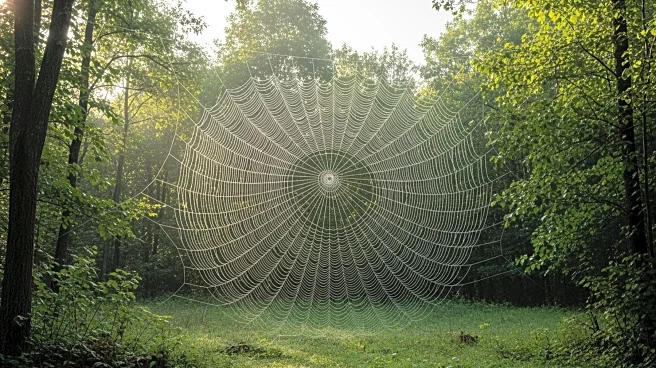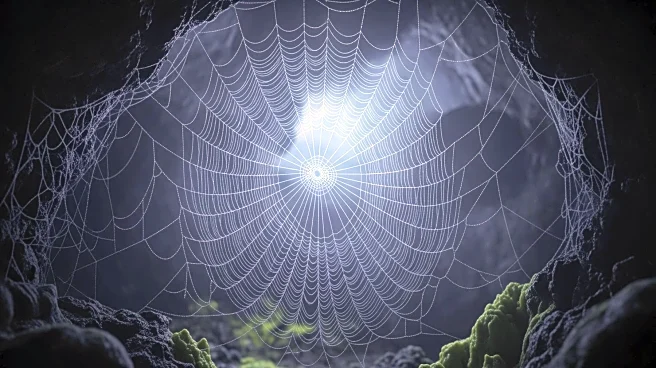What's Happening?
Romanian scientists have discovered what is believed to be the world's largest spiderweb, spanning 1,140 square feet and housing approximately 111,000 spiders. This massive web, located in a sulfuric cave
on the border between Greece and Albania, is home to two species of spiders that have never been recorded living together before. The discovery was detailed in the journal Subterranean Biology. The spiders sustain themselves by feeding on midges that thrive on sulfur-eating microbes within the cave, creating a unique ecosystem.
Why It's Important?
This discovery highlights the complexity and adaptability of ecosystems in extreme environments. The coexistence of two spider species in such a large web challenges previous understandings of arachnid behavior and ecology. The findings could have implications for the study of biodiversity and the resilience of species in harsh conditions. Additionally, the research underscores the importance of preserving unique habitats that support diverse life forms, contributing to broader ecological and environmental studies.
Beyond the Headlines
The discovery of this spiderweb raises questions about the potential for undiscovered ecosystems in other extreme environments. It also prompts discussions on the impact of environmental changes on such delicate ecosystems. The study of these spiders and their habitat could provide insights into evolutionary biology and the mechanisms that allow species to thrive in isolated and inhospitable conditions.












